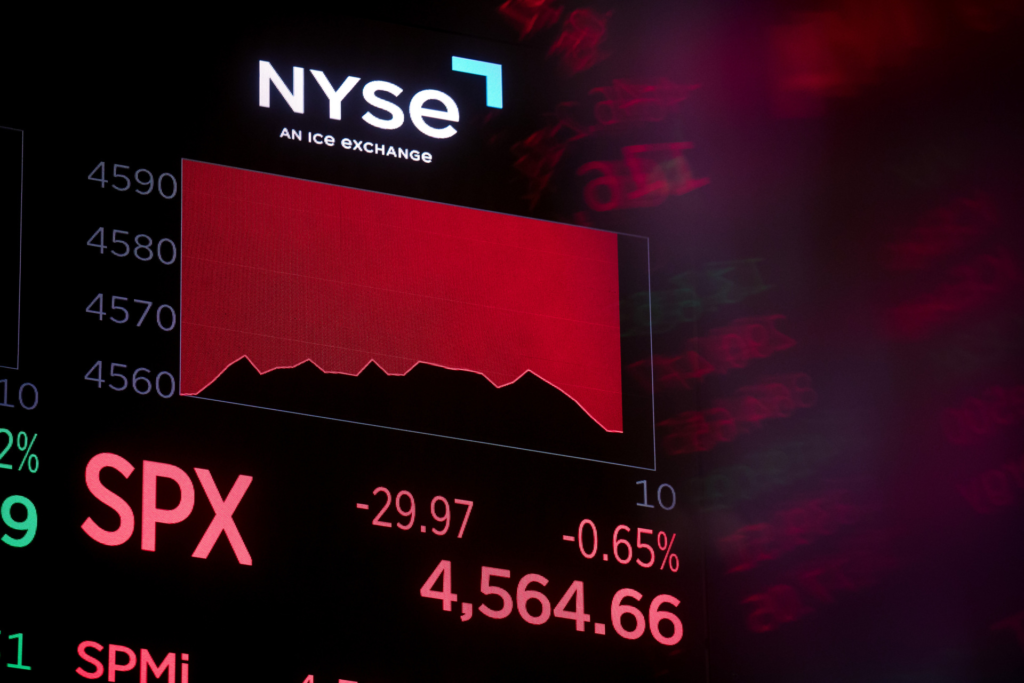
By John Carney and Alex Marlow
The Federal Reserve may have to get back to work.
In the weeks preceding the Federal Open Markets Committee (FOMC) meeting on October 31 and November 1, several Fed officials pointed to tightening financial conditions as a reason the central bank would likely be able to stay on hold. The idea was that markets were raising bond yields even though the Fed had not tightened since July, raising disinflationary pressures.
“Financial markets are tightening up and they are going to do some of the work for us,” Fed Gov. Christopher Waller said in a conversation moderated by former Republican House Speaker Paul Ryan on October 11.

Federal Reserve Governor Christopher Waller speaks during a Fed Listens event in Washington, DC, on Sept. 23, 2022. (Al Drago/Bloomberg via Getty Images)
At the time of Waller’s remarks, the yield on the 10-year Treasury had risen by around one percentage point since the Fed’s July hike.
Yields kept rising. A week or so later, the 10-year yield hit 4.99 percent. This helped cement the view on Wall Street that the Federal Reserve’s rate hiking days were behind it. Instead of pushing back on this view, Fed officials largely supported it. The hawkish statements from Fed Gov. Michelle Bowman or Richmond Fed President Thomas Barkin that more rate increases might be necessary seemed like outliers rather then predictions of central bank policy.
Since that mid-October peak, yields have come crashing down. The 10-year yield fell another 10 basis points or so on Tuesday to around 4.17 percent. That is the lowest since late August and early September.
Yields Fall with Each News Release
When some investors began predicting a few weeks ago that the yield on the 10-year would fall to four percent, this seemed like an incredibly optimistic attitude. Now it seems like common sense. Absent an upside economic shock—say a huge increase in payrolls in the employment report Friday—it’s likely that yields will continue to drop.
To put it slightly differently, each piece of economic data that comes in without an upside shock that could spark the Fed to reconsider staying on hold becomes a reason to push yields down further. The catalyst on Tuesday appears to be the cooling of demand for labor, as suggested by the job openings data published by the Department of Labor. The releases remove a risk of a change of heart at the Fed, providing another catalyst to buy bonds and push yields down.

A big question facing the market now is how much loosening of financial conditions will it take for the Fed to decide its needs to get back to work? We know that when the yield on the 10-year Treasury fell to 3.5 percent in the wake of the Fed’s response to last spring’s bank failures, Fed officials publicly fretted that financial conditions were likely not sufficiently tight to bring inflation down to their two percent target.
Indeed, the easing of financial conditions worried Fed officials so much that they dramatically increased their projections for interest rates this year. At the December 2022 and March 2023 meetings, the median expectation was for the fed funds rate to rise to 5.1 percent by the end of this year and then drop down to 4.3 percent at the end of next year.
The next time the projections were released was after the June meeting. These showed the median year-end fed funds projection had jumped to 5.6 percent for this year and four 4.6 percent for the following year. In other words, the Fed was penciling in the equivalent of two more quarter point rate hikes for the second half of the year and then less easing the following year.
After Tuesday’s decline, the yield on the 10-year is now closer to where it was in mid-April than where it was in mid-October. It would only take another two moves like Tuesday’s for the 10-year to print with a three-handle.

